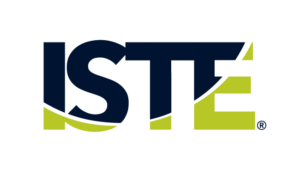 State leaders, including Wyoming’s State Superintendent of Public Instruction Jillian Balow, are learning that access to technology alone does not guarantee improved pedagogy. Access must be matched by efforts to build educators’ capacities to provide meaningful learning experiences for all students. Wyoming strategically invested in educator development by leveraging a research-based framework on effective technology use. Below, Balow shares how Wyoming led this process and her advice for other leaders.
State leaders, including Wyoming’s State Superintendent of Public Instruction Jillian Balow, are learning that access to technology alone does not guarantee improved pedagogy. Access must be matched by efforts to build educators’ capacities to provide meaningful learning experiences for all students. Wyoming strategically invested in educator development by leveraging a research-based framework on effective technology use. Below, Balow shares how Wyoming led this process and her advice for other leaders.
How did Wyoming recognize the need to build educator capacity around effective ed tech use?
In 2016, Gov. Matt Mead launched the Wyoming Classroom Connectivity Initiative to establish the infrastructure necessary for digital learning. This interagency effort provided supports for districts using E-Rate and exponentially increased the number of connected classrooms. We observed a “we can do it” mentality permeate throughout the state, as local leaders saw neighbors making strides. But what kept me up at night was that, despite our progress, there remained educators who only considered technology as useful for administrative tasks like grading.
Educator capacity has implications for equity. When properly trained, educators can empower students through technology to have agency in their learning. To better understand how to manifest this vision, we surveyed hundreds of district and school staff about their needs. We learned that stakeholders agreed on the importance of digital learning opportunities for student success and the benefits of professional development on integrating technology into instruction. This information was used to develop a statewide digital learning plan, which outlines how the state will systematically help educators use technology effectively.
Which policies and partnerships have been instrumental in helping build educator capacity?
I’m fortunate to work with colleagues who recognize the urgency of this issue. Together, we directly integrated the ISTE Standards into state content standards to show educators how technology can enhance learning in various subjects. We also adapted the ISTE Standards into our own digital learning guidelines, which map specific student skills and make recommendations for leveraging the ISTE Standards across grade bands.
Another incredible resource was ISTE’s 2019 roundtable for state chiefs, where I learned how other leaders were navigating the educator capacity issue. One strategy that stood out was ISTE Certification, designed specifically to support mastery of the ISTE Standards. With ISTE’s help, we worked to implement this rigorous program in Wyoming. We located a regional provider through an RFP [request for proposal] process and leveraged ESSA [Every Student Succeeds Act] Titles II-A and IV-A funds to enroll 100 educators. Our Professional Teaching Standards Board voted to qualify ISTE-certified educators for the state’s instructional technology endorsement. For the first time, Wyoming educators are permitted to earn a new endorsement without going through a postsecondary program.
How will the state sustain the development of educator capacity?
The value of ISTE Certification for Wyoming educators is that it provides a pathway for sustainability. The program is focused on improving pedagogy, rather than using a specific tool. Therefore, the practices learned can be applied in different contexts. ISTE-certified educators can also propagate effective technology use throughout their school communities, which is especially helpful for educators whose preparation programs did not train them on technology-enhanced pedagogy.
What advice do you have for other states engaging in this work?
The good news is, you don’t have to be a technology pro to begin this work and you don’t need to do it alone. State leaders must make this work a priority by developing a strategic plan in collaboration with experts within their agencies, external partners and stakeholders. Engaging these different groups will help you strategize and implement an impactful educator development model that effectively meets the needs of those directly supporting students every day.









